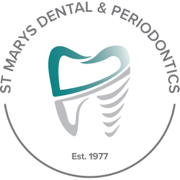Crowns & bridges are a long-term solution to protect a weak tooth
Dental crowns and dental bridges are both common restorative dental procedures used to repair and replace damaged or missing teeth. They are designed to restore the function, aesthetics, and structure of the teeth and mouth. Let’s explore each of these treatments in more detail:
Dental Crowns: A dental crown, also known as a dental cap, is a custom-made covering that is placed over a damaged, decayed, or weakened tooth. Crowns are used to restore the shape, size, strength, and appearance of a tooth, while also protecting it from further damage. They can be made from various materials, including porcelain, ceramic, metal (such as gold or silver), or a combination of materials.
The process of getting a dental crown usually involves two appointments:
- Preparation: During the first appointment, the dentist will prepare the affected tooth by removing any decayed or damaged areas. The tooth is then shaped to accommodate the crown. An impression of the prepared tooth is taken and sent to a dental laboratory, where the crown is custom-made.
- Placement: Once the permanent crown is ready, usually within a couple of weeks, you’ll have a second appointment. The dentist will remove the temporary crown (if one was placed) and carefully cement the permanent crown onto the prepared tooth. The crown is adjusted for fit and bite, and once everything is satisfactory, it is permanently bonded into place.
Dental crowns are versatile and can be used to address a variety of dental issues, including severe decay, cracks, fractures, large fillings, and cosmetic concerns.
Dental Bridges: A dental bridge is a fixed dental restoration used to replace one or more missing teeth by bridging the gap between existing teeth. It consists of one or more artificial teeth (pontics) held in place by dental crowns on the adjacent teeth, which act as anchors. Bridges are used to restore aesthetics, chewing function, and the alignment of the remaining teeth.
The process of getting a dental bridge typically involves multiple appointments:
- Preparation: Similar to getting a dental crown, the dentist will prepare the teeth on either side of the gap by removing a portion of their enamel to make room for the crowns that will anchor the bridge. Impressions are taken and sent to a dental laboratory to create the bridge and crowns.
- Temporary Bridge: While the permanent bridge is being fabricated, a temporary bridge may be placed to protect the exposed teeth and gums.
- Placement: Once the permanent bridge is ready, you’ll return for another appointment. The temporary bridge is removed, and the permanent bridge is carefully placed and bonded onto the prepared teeth. The dentist will ensure proper fit and bite alignment.
Both dental crowns and dental bridges can significantly improve the function and appearance of your teeth, as well as contribute to your overall oral health. The choice between these restorative options will depend on your specific dental needs, the condition of your teeth, and your dentist’s recommendations. It’s important to consult with a qualified dentist to determine the most appropriate treatment plan for your individual case.
Talk to our team today
